Hurricane Season in South Florida: What It Means for You
The pelting rain. The howling winds. Rob Marciano leaning sideways in a yellow raincoat. We’ve all seen the footage on CNN and The Weather Channel. Many people make reservations for a summer vacation in the Sunshine State, only to cringe in horror when they find out after-the-fact that they booked their trip during hurricane season, which extends between June 1 and November 30. COULD KATRINA HAPPEN HERE?
Few of us will ever forget the devastation caused in New Orleans and Southern Mississippi in the wake of Katrina in August 2005. People waited on rooftops and at shelters for days, waiting for assistance to arrive. But this kind of scenario is very unlikely in Miami. Why? First of all, one of the things that made New Orleans particularly vulnerable to hurricanes was the fact that much of the city lies below sea level. Once the water got in through the compromised levee system, it had nowhere else to go. So it sat there for days, making the task of getting in and out of the city very difficult. However, in Miami, the terrain is different. While the elevation is only an average of 11 feet, the city doesn’t have the bowl-shaped surface that New Orleans has. Therefore, the water doesn’t collect. The main risk in a hurricane is tidal surge, which is only a factor for a short distance inland. Outlying areas such as Miami Beach and Key Biscayne are evacuated during hurricanes, and any surge that occurs can promptly run off into Biscayne Bay. Another advantage Miami has over coastal Louisiana is a buffer zone—an area of land that weakens the storm prior to landfall. Coastal Louisiana used to have an extensive wetlands which operated as a hurricane buffer. However, this area has been neglected in recent years and much of it is now gone—lost to the Gulf of Mexico—leaving New Orleans more vulnerable than ever to tropical weather. Miami, on the other hand, is protected by the Bahamas to the east, and the mountains of Cuba to the south. While it is vulnerable to hurricanes, the mountain ranges in these areas act as blades, wearing at the ferocity of the storm. MIAMI’S WORST HURRICANES
(above) the Great Hurricane of 1926 was the last storm to significantly damage Miami Beach Despite its location on the southeast tip of Florida, it is remarkable that only two hurricanes—the hurricane of 1926 and Hurricane Andrew in 1992—caused any major destruction. Since that time, there have been a few other storms that have struck or grazed the area, such as Katrina and Wilma, but the damage paled in comparison to damage elsewhere. The statistics appear to be leaning in our favor! It has been theorized that the damage caused in Homestead by Hurricane Andrew in 1992 was largely the work of tornadoes generated by the storm. Regardless, it’s not the place you want to be. Another interesting fact: although hurricane season stretches from June until the end of November, it is only from mid-August through late September that the season is typically active. During an unusually active season, like the one in 2005, storms may form as late as October, but their frequency greatly diminishes by that time. ADVANCE NOTICE
Unlike many natural disasters, hurricanes provide you with at least three or four days’ advance notice, thanks to today’s modern storm-tracking technology. You don’t have to worry about them taking you by surprise, as you would an earthquake or a tornado. If a hurricane is headed toward South Florida, your airline will allow you the opportunity to reschedule your flight. If you’re already here and staying on South Beach, you can expect to be evacuated to a safe location if the potential danger is great enough. The most cumbersome part of a hurricane is often the aftermath. Some communities have to deal with August and September heat without electricity for days—sometimes weeks—on end. So, even though you will have some advance notice, it’s important for residents to have a hurricane plan in the event that you don’t have access to electricity and fresh water for several days. KNOW YOUR CATEGORY
Earthquakes have the Richter scale. Tornadoes have “F” classifications from 1 to 5. Hurricane intensity is rated by something known as the Saffir-Simpson hurricane scale. This is how it breaks down: One (74-95 mph): No real damage to building structures. Damage primarly to unanchored mobile homes, shrubbery, and trees. Also, some coastal road flooding and minor pier damage Three (111-130 mph): Some structural damage to small residences and utility buildings with a minor amount of curtainwall failures. Mobile homes are destroyed. Flooding near the coast destroys smaller structures with larger structures damaged by floating debris. Terrain continuously lower than 5 feet ASL may be flooded inland 8 miles or more. Four (131-155 mph): More extensive curtainwall failures with some complete roof strucutre failure on small residences. Major erosion of beach. Major damage to lower floors of structures near the shore. Terrain continuously lower than 10 feet ASL may be flooded requiring massive evacuation of residential areas inland as far as 6 miles. Five (greater than 155 mph): Complete roof failure on many residences and industrial buildings. Some complete building failures with small utility buildings blown over or away. Major damage to lower floors of all structures located less than 15 feet ASL and within 500 yards of the shoreline. Massive evacuation of residential areas on low ground within 5 to 10 miles of the shoreline may be required. YOUR HURRICANE PLAN
Have a pow-wow with other family members in which you can discuss your home’s vulnerability to hurricanes in terms of flooding, storm surge and wind. Depending on these factors, you first have to make the decision of whether to stay or evacuate. If you decide to evacuate, familiarize yourself with evacuation routes for your area. Your local TV station or newspaper usually has this information available on their website. Also, decide on a pre-arranged place for your family—and close friends—to meet. Think in terms of tens of miles rather than hundreds of miles. Furthermore, designate an out-of-state friend or relative as a single point of contact for all family members. Have a plan for your pets also if you decide to evacuate. Part of the reason so many people stayed behind in New Orleans when Katrina struck was because they weren’t allowed to take their pets with them on buses and to shelters. Because of this situation, officials are now becoming more aware of the need to accommodate pets, so be sure to find out your options so you don’t have to leave your furry loved ones behind. Those who left their pets at home in Katrina believed they would be coming home in a matter of days and didn’t anticipate that it would be weeks before they could attend to their animals. Don’t make that mistake! If you decide to stay, the National Hurricane Center recommends including these items in your hurricane survival kit:
With a little preparation and familiarity with the routines, hurricane season in South Florida can be a breeze!
You Deserve More Than an Ordinary Vacation.
Travel with Miami Beach 411 Today!
The Miami Beach 411 Travel Store is Open 24/7.
2 Comments on"Hurricane Season in South Florida: What It Means for You"
|

Like what you see? Let's talk about how
we can help your vacation --> Contact Us |
|
Like what you see? Let's talk about
how we can help your vacation
--> Contact Us
how we can help your vacation
--> Contact Us







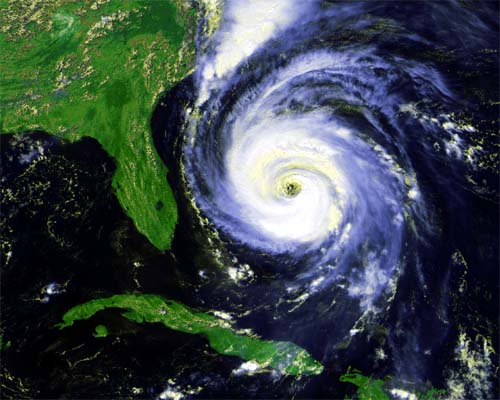
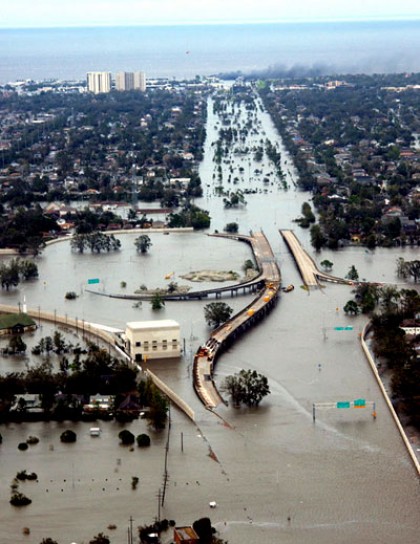
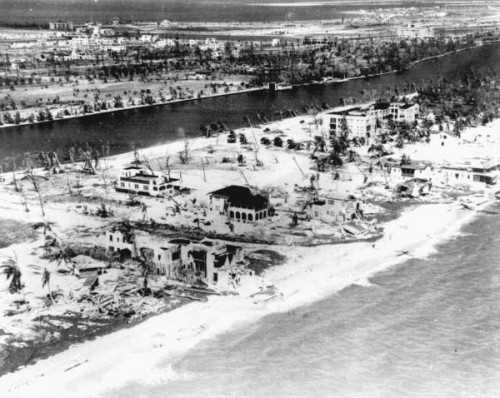
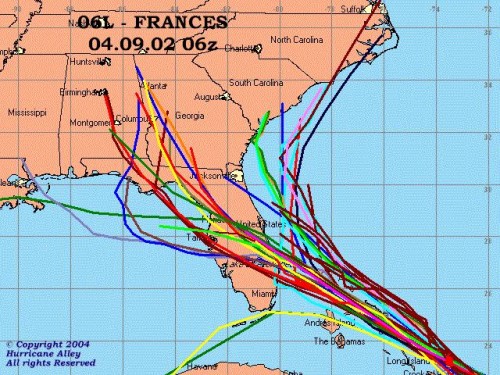
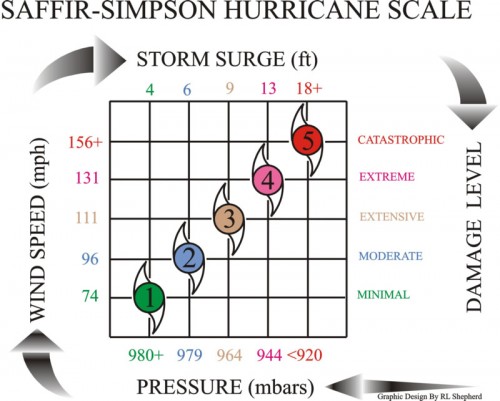
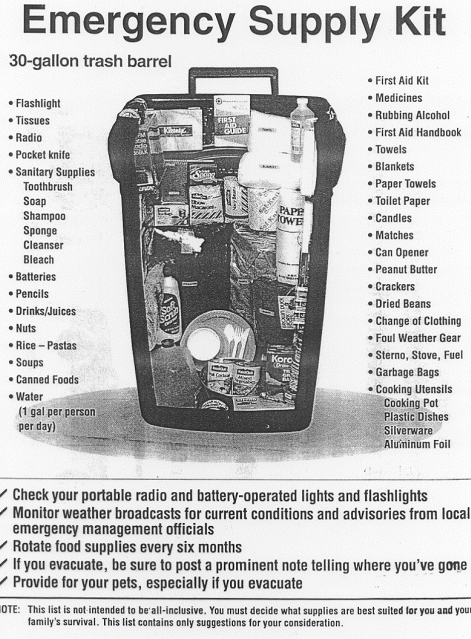








Caren says:
Great article!
Where did you find the image of the emergency supply kit in the trash barrel? I’ve never seen that before but it sounds like a good idea.
Posted on 08/16/2009 at 6:29 AM